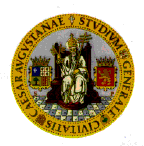
| MATCH Advanced Summer Schools | 
|
|
Index page General presentation Participation Performance School System Engineering School Registration Practicalities Contact  |
General presentationMATCH (Modelling and Analysis of Time Constrained and Hierarchical Systems) is a Human Capital and Mobility initiative, sponsored by the European Union. One of its objectives is the organization of two open complementary Advanced Schools concerning Discrete Event Dynamic Systems (DEDS), focusing one on performance modelling and evaluation, and the other on modelling and verification. Each school can be attended independently. In the past years an increasing demand for precise and graphical modelling techniques has become visible in almost all fields of computer applications from industry, commerce and research. This is due to growing requirements for efficient and reliable methods on the one hand and increased power of computer tools on the other. It is thus not surprising that Petri nets have become a common technique for the specification, validation and performance evaluation of systems, since they provide an intuitive approach, formal techniques and graphical description methods. The intended audience consists of people interested in both the theoretical and practical aspects of modelling for evaluation and verification of DEDS. Concepts, methods and computer supported tools will allow to provide answers to questions like the following:
|
|